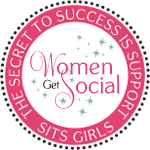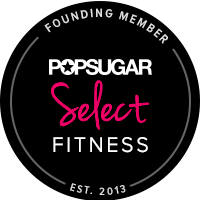You are probably wondering what in the world is this blog post about, judging by the title, right? Either way, you definitely want a slide!
Lately, I’ve received some questions about what exercises can help to strengthen the pelvic floor muscles to reduce the amount of leakage (pee) when jumping, jumping rope or even laughing. With these questions, I can’t help but think of what my Bradley Method instructor said when I was pregnant with Keenan.
Our instructor gave us an analogy of a slide versus a hammock that I will never forget. When the baby is in the birth canal, a strong pelvic floor creates a slide, making it easier for the baby to be born, and a weak pelvic floor makes a hammock, thus making it harder for the baby to come out (sometimes causing them to be stuck). Not only does a strong pelvic floor help make it easier to birth a baby, but it helps prevent and/or improve urinary incontinence later in life (especially since women are prone to losing bladder control after having children, ugh!).
In the Bradley Method, they suggest doing a minimum of a 100 kegel exercises (contracting and relaxing your pelvic floor muscles), as well as squatting several times a day, everyday throughout your pregnancy to strengthen your pelvic floor. But, I believe women should be doing kegels and squats everyday, regardless if they are pregnant, which is what I do on a daily basis and recommend to my clients.
Just like losing weight and changing your body composition, you can’t expect to lose weight if you don’t change the way you are eating and exercise regularly, right? The same applies to your pelvic floor. If you don’t exercise it, it won’t be strengthened, and it will remain a nice, relaxed hammock.
Here are 3 easy exercises to help strengthen your pelvic floor that can be done in less than 10 minutes and easily incorporated into any exercise program…
1. Pelvic Rocks: Get on your hands and knees with a flat back and your head staying neutral, lightly rock just your pelvis, pulling it into your belly button without arching your back. Similar to a cat camel stretch, but do not arch your back. Aim to do 3 to 4 sets of 10.
2. Good Ol’ Kegels: Whether sitting on the couch and watching TV, reading, driving or squatting (see below!), contract and release your pubic muscles, working up to 100 reps. If you can’t do them all at once, do a few sets througout the day. I like to do my kegels while I squat at the end of my wod, after I do my transverse ab exercises for my diastasis (before I stretch). I start with my pelvic rocks, then move to my ab exercises and end with the squat hold while doing 100 kegels. It’s a nice cool down.
3. Squat Hold: Squat as low as you can and carefully push your knees out with your elbow and hold it for as long as you can, take a quick break and lower into your squat again. Aim to do at least three 30 second holds. Or, do your kegels while holding your squat, which is what I prefer. Aim to do 50 kegels while holding your squat, take a break and do 50 more.
If you try the exercises, let you me know what you think! Have a great weekend!
Question:
Do you do kegels? If so, when do you do them and how frequently?














Thanks for the explanation and exercise suggestions! With my first pregnancy, I did about zero kegels but I didn’t suffer for it too badly postpartum. There were a couple times my lack of “control” surprised me after baby, but fortunately they were few!
Now with pregnancy #2, I am being much more intentional about doing kegels! I hadn’t heard of the squat hold for strengthening the pelvic floor and will be adding that one to my “routine”. With only a couple months until our baby comes, I need to kick the pelvic floor exercises into high gear.
You are welcome! I can’t believe you only have a couple months left; how exciting!!
The squats are definitely excellent for urinary incontinence. Studies have shown that it results in a thicker tissue that supports the bladder neck. Women who perform 10 squats per day 3 times per week have less bladder problems than women who don’t.
I am going to start recommending the pelvic rock exercises to my patients.
I’m all about squats, even when I play with my kids. I tend to squat more than I sit!